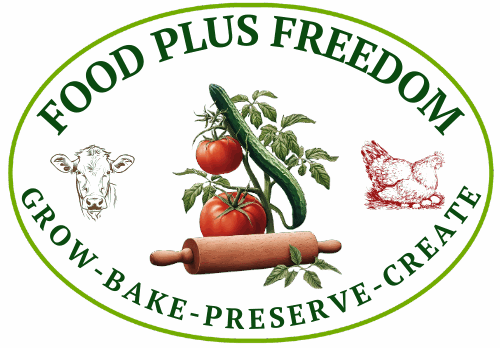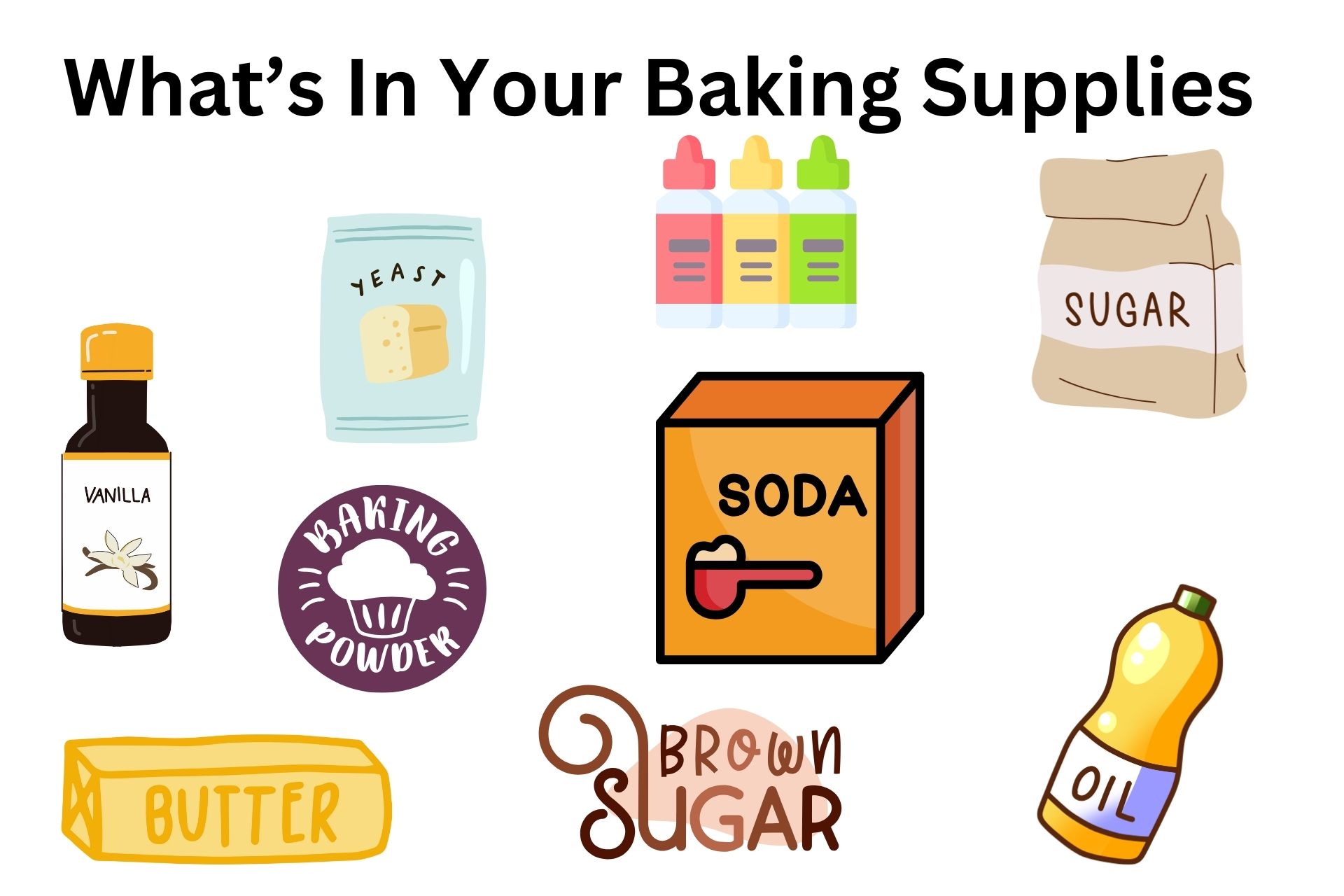Beware Of These Baking Ingredients, Plus Alternative Solutions
Calling all homesteaders, bakers, and anyone who likes to cook or bake from scratch. The agenda has come after you by changing your food ingredients from wholesome to poison. I know I’m not telling you anything new. That’s why you bake and cook from scratch.
The bad news, they’re coming after individual ingredients you use for healthy from scratch food. The good news is we can fight back easier than they can come after us. Why? Because we have the skills and knowledge to eat from scratch.
It’s not feasible to grow all your own food. There is food that doesn’t grow in your area or we can’t create. So you buy organic foods to stay healthy and unpoisoned. However, even if we are buying organic, they are still adding crap to it.
The more I read about what’s going on in the organic industry, the more I want to find a new planet. Anyone want to come with me?
Yes, organic is less toxic, but the system is getting around the rules by adding non-organic washes and mRna to your food.
Nine Baking Ingredients You Need To Double Check For Additives
- Yeast or bakers yeast.
Bakers yeast is the common name for strains of yeast used in baking. It’s a leavening agent, aka it makes your dough rise. I don’t know about you but I buy yeast by the pound. Yes, I use that much yeast throughout the year and have for many, many years.
Yeast comes in several options or names, such as active dry, rapid rise, instant dry, quick rise, and fresh yeast cake, to name a few. You can buy yeast in packages in 1/4 ounce up to one pound packages.
Shouldn’t yeast be just yeast for the ingredients? What I discovered might shock you. Plus, it didn’t matter if the yeast was organic or not, they all had the same issues.
I could find several brands of yeast with only yeast as an ingredient. Sounds great, right? Well, hang on for a moment. Pure yeast is only available for the small packages of yeast. I couldn’t find any yeast company that sold one pound blocks of yeast to only have yeast in the ingredients.
Different companies included different ingredients in the yeast. The one pound packages all had yeast or saccharomyces cerevisiae, plus any combination of the following extra ingredients.
– Ascorbic acid is also known as Vitamin C. People add it to help the yeast work better. Ginger and apple cider vinegar are among the natural ingredients that enhance yeast performance. Even if it’s organic yeast, it doesn’t say organic ascorbic acid.
-Sorbitan monostearate: It’s a Food Grade vegetable based emulsifier. An emulsifier helps mix substances together that normally don’t mix. Like oil and water. Yeast mixes nicely with your liquid and flour without needing an emulsifier.
– Wheat. I don’t understand why a company included wheat in that particular brand of yeast. Again, wheat isn’t necessary.
–Solutions: Buy baking yeast that only has yeast in its ingredients. Or learn to make wild or sour dough yeast and bread. - Baking Soda or Sodium Bicarbonate makes baked goods rise when it mixes with an acid and produces carbon dioxide. You don’t use baking soda instead of yeast, but you use it in things like banana bread, pancakes, and muffins when you want them to rise and don’t want to use yeast.
Be mindful of what the baking soda is called. If it uses terms like multi-purpose or all purpose baking soda, it will have extra ingredients such as cornstarch, sodium aluminum, and mono-calcium phosphate. Stay away from products that say they have aluminum in them. Some brands carry aluminum and aluminum free baking soda.
Solutions: Buy non-aluminum baking soda. I found several recipes that used whipped egg whites in the replace of baking soda for pancakes. I haven’t tried this yet, but I will. - Baking Powder is another leavening agent for baking. You can find aluminum and aluminum free brands. Unlike baking soda, baking powder contains sodium aluminum if it isn’t specifically aluminum free.
Other ingredients I found in different baking powder brands include.
-Cornstarch. Remember, non-organic cornstarch comes from genetically modified corn.
– Mono-calcium phosphate is an inorganic, synthetically made chemical compound.
– Baking soda, refer to the above listing for ingredients.
– Acid phyrophosphate, which helps leavening through lowering the Ph.
Solutions to replace baking powder. If your recipe tastes too salty, reduce or omit the amount of salt used, and lessen the amount of baking soda.
– Lemon juice and baking soda: 1/2 teaspoon of lemon juice with 1/4 teaspoon of baking soda.
– Molasses and baking soda: 1/4 cup of molasses with 1/4 teaspoon of baking soda. You need to take out the same amount of liquid to keep the constituency and be aware it may taste sweeter. I haven’t tried this one yet.
– Vinegar and baking soda: add 1/2 teaspoon of vinegar and 1/4 teaspoon of baking soda. Watch for consistency.
– Yogurt and baking soda: add 1/2 cup of yogurt to your wet ingredients, and an extra 1/4 teaspoon of baking soda to your dry ingredients. Make sure you remove 1/2 of cup of wet ingredient for consistency or you’ll need to add more flour. - White Sugar: There isn’t anything added to your white sugar, but you need to know what type of sugar you are using. You want pure cane organic sugar. If it’s not pure cane sugar, it’s made from beets. Genetically engineered beets make up roughly 85% of the beet crop in the United States. Plus, standard beet cultivation involves heavy pesticide use.
Pure Cane sure is more granular than beet sugar. It’s what we grew up with before genetically modified food hit the scene.
The process of making white sugar or table sugar involves removing all the molasses from the sugar. You can get organic sugar so you know the process didn’t include synthetic chemicals.
Solutions: Use raw honey or pure maple syrup as your sweetener. - Brown Sugar is white sugar that still contains the molasses. It comes in dark and light brown sugar. Some brands leave the molasses in it, while other take it out and add it back in.
Ingredients from different manufacturers: sugar, molasses, cane molasses, and brown sugar.
Solutions: Use molasses and white sugar: To replace each cup of light brown sugar, use 1 cup of white sugar plus 2 teaspoons of molasses. Now you’re adding your own molasses back in and you know where it comes from. For dark brown sugar, add 1 tablespoon of molasses per cup of sugar.
You can also just use honey and maple syrup as you would to replace white sugar. - Vanilla extract: Vanilla adds flavor to your baking, plus it can make your sweetener stronger. There are two types of vanilla, vanilla bean, or artificial vanilla flavoring.
– Vanilla bean or real vanilla ingredients are water, cane alcohol, vanilla bean.
– Artificial vanilla, vanillin ,or imitation vanilla ingredients are water, sugar, artificial flavor, citric acid, sodium, benzoate, caramel color. Manufacturers often create artificial vanilla, called vanillin, from a by-product of the wood pulp industry.
Solutions: Use organic real vanilla extract or make your own with rum and vanilla beans. - Coloring: Baking can be more fun, especially icing when you use colors. DO NOT use artificial colors. Whenever you see colors that are bright for food, it’s a chemical-based petroleum color.
You’re not a car, truck, or tractor. You do not need petroleum based anything in your body. It’s toxic. Avoid polysorbate 80 for it’s a synthetic chemical. It’s used in many baking coloring deemed as a plant-based dye.
Solution: Use organic and non-gmo food coloring made from fruits and vegetables, nothing else. You can also make your own food coloring like ground up beets, beet juice, carrots, etc. - Butter:
There can only be one to two ingredients in real butter, cream, and salt. Bakers prefer unsalted butter because of its consistency and taste.
I’ve noticed brands adding natural flavors to their butter. It’s in organic, conventional, salted, and unsalted butter. Avoid natural flavors in butter. You don’t know what is being added.
Solutions use organic butter with only cream and salt for the ingredients. If you can’t find unsalted butter, use the salted and take out the added salt from the recipe. Or make your own butter with fresh cream. - Oil Stay away from vegetable oil, canola oil, Crisco, and seed oil like sunflower seed. These oils are extremely processed, unhealthy, and genetically engineered. If you’re using olive oil, beware. There are many reports that not all olive oil is pure olive oil. Companies are adding other oils to meet demand. Olive oil companies can get a red label that says “About Olive” on them for verified 100 percent olive oil. https://www.aboutoliveoil.org/ for olive oil information and labeling.
Solutions: Find olive oil companies that are real. Learn to use tallow, ghee, lard, or butter for your baking and cooking.
Are you using any of the above nine ingredients in your baking? These from scratch ingredients are being ruined or have become poisonous. The worse part is you didn’t even notice. I didn’t when I started looking at my baking supplies. It seems I have to double check everything I buy, organic or not, from the stores every time I buy it.
Check your cabinets and use these solutions to avoid ingredients you don’t want in your baking.
Make sure you always read ingredients on store-bought products. You can’t predict when manufacturers will change the ingredients.

